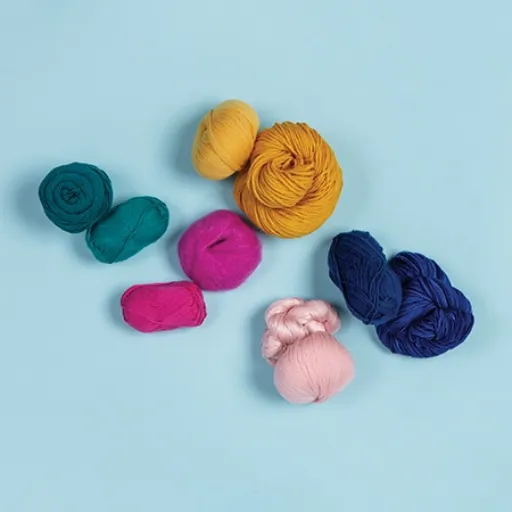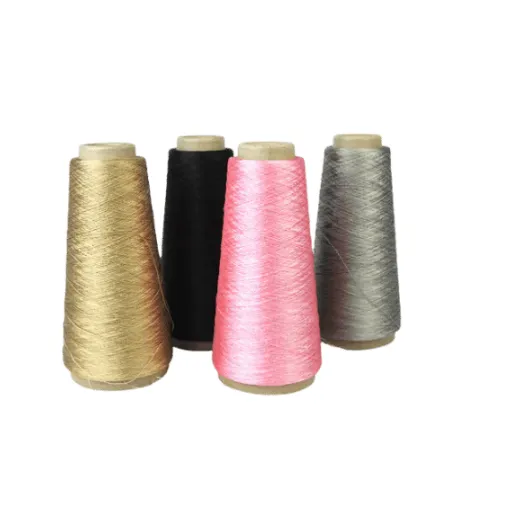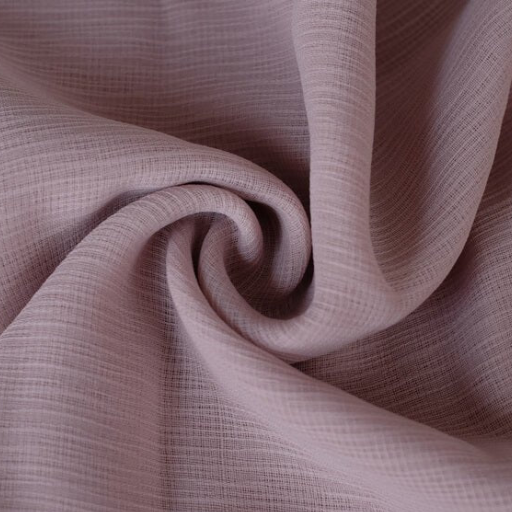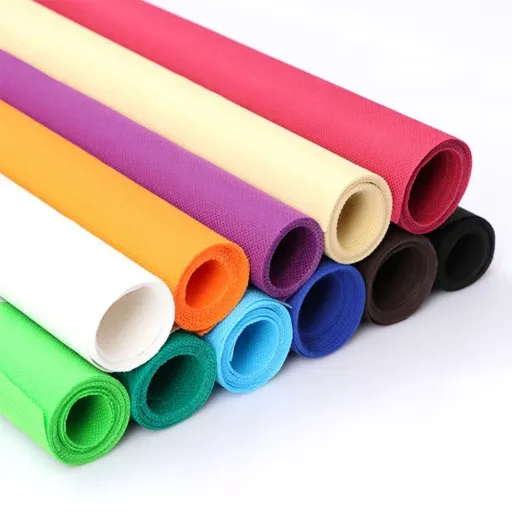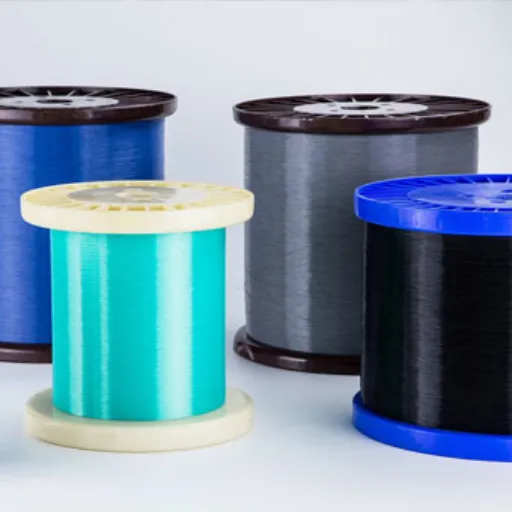The textile industry has found a unique position for this semi-synthetic fiber for its luxurious texture, versatility, and cheap price. With a reputation for having the glimmer of silk and maximum breathability, this famous fabric serves the crucial job of filling the void between an entirely natural kind and a wholly synthetic kind so that it may collect the best traits of both. From the origin of viscose rayon, how its production takes place, and how it is used in modern textiles, this blog post truly explores the interesting world of viscose rayon. Whether you are interested in fashion, sustainability, or just in textiles, this overview sheds light on why viscose rayon is now a household name in the world market. Stay with us as we unfold the manufacturing process and grasp the far-reaching applications of this fiber in the textile industry and beyond.
Introduction to Viscose Rayon
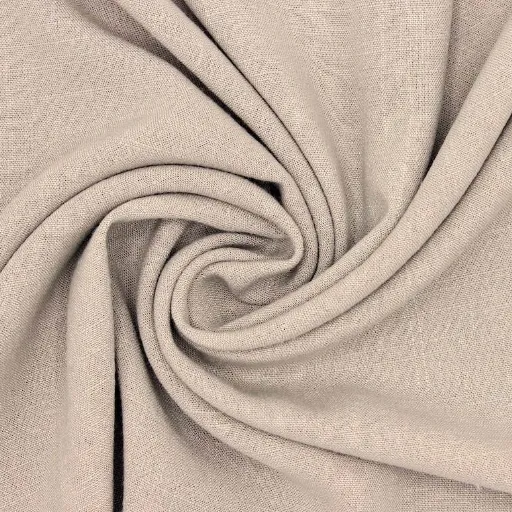
What is Viscose Rayon?
Viscose is a semi-synthetic fiber of cellulose, a natural polymer based principally in wood pulp. It is being produced through chemical manipulation of the cellulose to obtain a solution which is then spun on the set of fibers. They are called semi-synthetic in the sense that they have the natural origin and are then chemically processed, which contributes to the versatility in the use of viscose rayon in textiles and other industries.
Key Properties of Viscose Rayon:
- Very soft and grants a lot of breathability
- Resembles natural fibers such as cotton or silk
- Cheaper to manufacture than natural alternatives
- Highly absorbent and lightweight
- Can be dyed in bright colors
Conversely, the environmental impacts of the manufacturing process of viscose rays have questioned its sustainability. In contrast, the recent improvement in technology, in addition to responsible sourcing, is now attempting to lessen its environmental impact, making viscose rayons a hot topic when discussing eco-friendly textiles.
Historical Journey and Origin of Viscose Rayon
Known as artificial silk, viscose rayon came into existence in the late 19th century. It was developed as an answer to increasing silk-like cloth demand, thereby artificially making a synthetic counterpart out of natural cellulose. The term “viscose” originated out of the viscous process which was used to convert pulp from wood or other plant-based materials into fibers. This novel method served as a milestone toward bridging a long-standing gap created between natural and synthetic materials.
Historical Timeline:
- • Late 19th Century: Development begins as “artificial silk”
- • 1892: British patent for viscose production granted
- • 20th Century: Industrial-scale production begins
Viscose rayon was developed through the work of French scientists Hilaire de Chardonnet and later by Charles Cross, Edward Bevan, and Clayton Beadle, who had refined the methods of production of the fabric. In 1892, the British patent for viscose production was given, thereby commencing its industrial-scale production. Raw materials like cotton linters and wood pulp being easily available made the viscose a cheap alternative to silk that was costly and scarce at that time.
During the 20th century, viscose rayon continued in great production, the cheap nature of its materials, and its versatile applications making it a good candidate for textiles. Gradually, the process of manufacturing evolved out of concerns for producing viscose more efficiently and with less impact on the environment. In the contemporary world, viscose rayon still stands as a strong pillar in fashion and textiles by being loved for its ability to closely replicate natural fabrics in feel and look while allowing for infinite adaptations.
Types of Rayon and Their Distinctions
Rayon is in fact broadly classified according to the use to which it is dedicated. The main categories of rayon include viscose rayon, modal rayon, and lyocell. Since from cellulose, the distinguishing factor lies in the variety of processes used to develop the fibers and the properties that subsequently ensue.
| Type of Rayon | Key Characteristics | Primary Applications | Environmental Impact |
|---|---|---|---|
| Viscose Rayon | Soft, breathable, resembles cotton and silk texture | Textiles, household items, lightweight garments | Higher chemical usage, environmental concerns |
| Modal | Stronger, softer, more resistant to shrinkage, good moisture absorption | Activewear, underwear, performance clothing | Moderate environmental impact |
| Lyocell | Smooth hand, good strength, sustainable and biodegradable | High-performance apparel, sustainable fashion | Most environmentally friendly, closed-loop system |
Manufacturing Process of Viscose Rayon
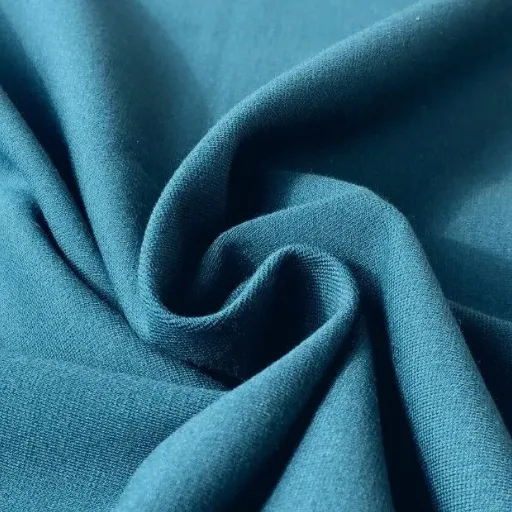
Raw Materials Used in Viscose Fiber Production
The production of viscose rayon largely depends on cellulose as its principal raw material. Cellulose is acquired from natural sources like wood pulp, more typically from softwood or hardwood. Hardwoods or softwoods from trees such as spruce, pine, or beech are selected for pulp-making with high cellulose content considered paramount in viscose fiber manufacture. Once purchased, manufacturers ensure that the pulp is further treated to strip away the impurities and to leave only the good cellulose.
Essential Chemicals in Viscose Production:
- Sodium Hydroxide: Used for initial cellulose treatment and decomposition
- Carbon Disulfide: Helps form cellulose xanthate solution
- Water: Extensively used for chemical treatment, regeneration, and washing
Water plays one important role in the production of viscose fibers. It is extensively used for chemical treatment, regeneration, and subsequent washing of the fibers to obtain a good-quality final product. Despite the fact that viscose rayon is made up of chemical processes, certain advancements have been made to bring about environmental safety. As an example, chemicals are captured and reused in a closed-loop system to ensure minimum waste and pollution, thereby ensuring that manufacturing remains sustainable.
Step-by-Step Process for Fiber Manufacture
Manufacturing Steps:
Raw Material Preparation
The fiber manufacturing process is much more than forming fibers from simple raw material. For viscose rayons, cellulose from any source such as wood pulp or cotton linters is used. This cellulose undergoes treatment in a series of steps wherein contaminants are removed, and an appropriate foundation for fiber formation is created.
Chemical Treatment and Making Cellulose Xanthate
The purified cellulose is reacted with caustic soda solution, converting it into alkali cellulose. It is then aged, pressed, and reacted with carbon disulfide to form cellulose xanthate. This intermediate is very important, as it yields the viscous solution required for fiber production.
Spinning of Fibers
The cellulose xanthate solution, termed viscose, is filtered and degassed so as not to obstruct the spinning. It is forced under pressure through fine spinneret nozzles into a chemical bath. This chemical bath contains solutions to regenerate the cellulose, so it turns the cellulose from the liquid viscose to solid fibers. The fibers are stretched, washed, and treated to improve strength and texture, thus becoming the fiber product of choice.
In these respective steps, the manufacturer creates high-quality fibers for their varieties of uses. The addition of environmentally conscious technology such as closed-loop systems suggests the importance it has gained within fiber production today.
Chemical Reactions Involved in Rayon Manufacturing
Rayon manufacturing features a plethora of chemical reactions that enable the transformation of cellulose into useable fibers. The process initiates a treatment of cellulose, commonly derived from wood pulp, with sodium hydroxide to alkali cellulose. This reaction makes the cellulose more reactive and prepares it for further processing.
The alkali-cellulose is treated with carbon disulfide to become cellulose xanthate. This is a critical step in the process because cellulose xanthate is the important intermediate that renders the cellulose soluble in the sodium hydroxide solution. After the viscose solution is formed, purification, and ageing are carried out to maintain uniformity.
Finally, the viscose solution is injected through a spinneret into a bath of sulfuric acid and other compounds. This allows a set of reactions to take place, which returns the cellulose xanthate into pure cellulose fibers. These fibers are solidified, washed, and treated until they acquire the required properties, thereby converting the raw cellulose into rayon. This process actually shows the complex role chemical reactions play in making very useful and versatile fibers.
The Manufacturing Process of Viscose Rayon
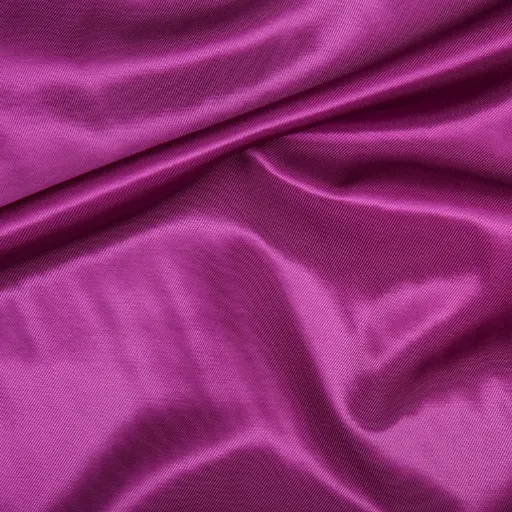
Raw Material Selection: Cellulose Source
Cellulose is derived from viscose rayon; usually, it comes from wood pulp, with possible alternative plant origin. Good raw materials are trees that are fast-growing and renewable, for example, bamboo, spruce, or beech. These are chosen because they have high cellulose content and will regenerate quite fast and thus are considered a sustainable method for fiber production.
The wood pulp is chemically treated to purify the cellulose, separating it from lignin and other wood constituents. Following this step, the manufacturing of rayon employs the purified raw material. In this manner, manufacturers ensure through various enhancements that a very consistent and high-quality cellulose base is used as the starting point from which the viscose is created.
🌱 Sustainability in Raw Material Selection:
Sustainability contributes to the choice of cellulose sources. Responsible forestry practices and certifications ensure the raw materials are harvested with respect to the environment and social matters. This approach is taken to ensure the safe minimal impact possible on nature, thereby supporting the growing demand for sustainable production of textiles.
Dissolving Cellulose: Key Techniques
Dissolving cellulose is an immediate step toward the production of viscose and other cellulose materials. It starts with the preparation of the cellulose, usually from wood pulp or other plant fibers, so that it is at the requisite level of purity and quality. Cellulose is treated to eliminate impurities and to produce a state amenable for dissolution.
When a cellulose solution is made, one of the key activities involved is putting a solvent into action in which the cellulose is made viscous. These solvents are usually alkaline ones, sodium hydroxide being the chief among them, and may also include reagents such as carbon disulfide to assist in the change. This procedure produces cellulose xanthate dissolved in solution for conversion into textile fibers. Parameters such as temperature and time must be very strictly controlled so as to ensure the maximum possible yield of the dissolved cellulose and the optimum quality of the end product.
Another approach being discovered is that of clean solvents, such as ionic liquids. A greater emphasis is put on reduction in the use of potentially hazardous chemicals through such newer techniques and on sustainability considerations. By giving importance to methods that are safe and environmentally benign, the industry is on its way to a responsible and green approach for cellulose dissolution.
Spinning Process: From Solution to Fiber
The spinning process converts dissolved cellulose into fibers through controlled stages. First, a solution of cellulose-a.k.a. spinning dope-is prepared and filtered to maintain uniformity and to remove all the dust particles, in order to obtain the best quality fiber and to avoid clogging of the spinneret. A spinneret is the smallest device possible with very fine holes in it through which a solution is extruded.
The filtered solution passes through the spinneret into a coagulation bath, where solid filaments of cellulose are regenerated. The solvent is removed by a chemical or physical mechanism from the solution to allow solidification of cellulose transformed from solution to solid. The coagulation bath details in the sense of composition, temperature, concentration, etc., dominate qualities of the final fibers like strength, homogeneity, and texture.
Finally, the changed fibers undergo some optional post-processing, which may include washing, drying, and stretching, with the intent of removing residual solvents and improving the fibers’ mechanical properties, such as durability and elasticity. So, by fine-tuning every step in the spinning process, manufacturers start making fully consistent and high-grade cellulose fibers acceptable for all kinds of applications, from textiles to industrial uses.
Quality Control in Viscose Production
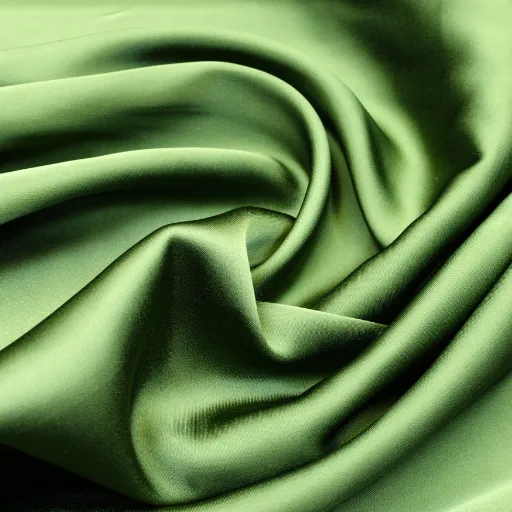
Testing Fiber Quality: Standards and Methods
In Fibre Testing for viscose production, standardized procedures and reliable methods must be followed to ensure that the end product meets all required specifications. Important parameters assessed include tensile strength, elasticity, moisture content, and uniformity of the fibre. These parameters are utilized differently depending on the application in which the fibres find use. In the laboratory, testing is often carried out employing standardized techniques as prescribed under ISO or ASTM to ensure consistency of the tester’s results and also to comply with international industrial standards.
⚡ Key Quality Testing Parameters:
- Tensile Strength: Force required until fiber yields, indicating durability
- Elasticity: Fiber’s ability to return to original position after stretching
- Surface Uniformity: Assessment under different magnifications for defects
- Moisture Content: Critical for mechanical properties evaluation
- Biodegrading Testing: Environmental compatibility assessment
Physical testing stands as a must for quality assurance in the case of fibers. Tensile strength tests greatly contribute to checking about the force imposed on the fiber until it yields, which is basically about durability. On the other hand, elasticity tests check what the fiber could do in returning to its aligned or unstretched position once it has been stretched, especially when applying them to works involving flexibility. Surface uniformity can be assessed under different magnifications, which might also reveal any defects and irregularities on the surface that may bring about performance issues.
During quality testing, environmental factors are taken into consideration. For instance, since mechanical properties can be affected by excessive moisture or lack of it, fibers are subjected to moisture content testing. Testing procedures may also entail biodegrading testing and evaluating compatibility with different dyes and chemicals, depending on the end use of the viscose fiber. Rigorous testing procedures implemented for product inspection ensure their sustainability and efficiency in manufacturing.
Impact of Fiber Quality on Fabric Performance
The state of fiber quality determines fabric performance. The better the fiber quality, the stronger the fabric will be, and it will be the basic structure for being breathable as well as comfortable in varied applications. Fiber length, strength, and elasticity are major factors affecting the fiber’s ability to be stressed, stretched, and relaxed with resignation to the fabric form through time period. Thus, smooth and strong fabrics caused by longer and uniform fibers are suitable for highly used clothes.
Another very important issue related to fabric quality is the resistance against wearing out. Fibers of high tensile strength would not break easily during production or during use, thus making the fabric more resistant. Such fiber absorption or wicking away moisture would otherwise increase comfort, which is particularly important for sportswear or for warm conditions. These properties derive directly from the fiber properties used.
Finally, fiber quality determines the look and finish of a fabric; dyes absorb better in high-quality fibers, producing brighter and longer-lasting colors. Inferior fiber quality, however, can dye the fabric unevenly, cause pilling, or confer coarseness on it, thereby reducing its value. When manufacturers ensure that fabrics are made with the finest fibers, they are capable of producing fabrics that not only fulfill all functional requirements but maintain their appearance for longer periods.
Regenerating Cellulose: Innovations in Quality Improvement
Regenerating cellulose is a process by which natural cellulose issue, generally of wood pulp or cotton origin, is converted into fibers suitable for fabric-making. This regenerated cellulose is used to manufacture products like viscose, lyocell, and modal, all valued for their softness, breathability, and utility. Innovations in the field thus concentrate on improving fiber and to make them sustainable with a minimal impact on the environment.
🔬 Recent Innovations in Cellulose Regeneration:
- Closed-loop Production Systems: Recycle almost all solvents and water during processing
- Enzyme Treatments: Eco-friendly means to attack cellulose without harsh chemicals
- Enhanced Fiber Properties: Improved resistance to pilling, better color retention, increased stretch
One major innovation is the application of closed-loop production systems, especially with lyocell-type fabrics. Such systems manage to recycle almost all solvents and water applied during the processing stages, thereby diminishing wastes and chemical discharge. The other advance in enzyme treatments has allowed for eco-friendly means to attack cellulose, improving the fiber quality without using harsh chemicals.
Another major area of regeneration development deals with improving the inherent strength and durability of regenerated cellulose fibres. Modern methods make regenerated fibers more resistant to pilling, retain colors better, and offer more stretch. These improvements add to the functionality of a fabric and enhance its lifespan-putting it up for more ergonomic use by consumers and eco-conscious producers alike.
Environmental Considerations in Viscose Manufacturing
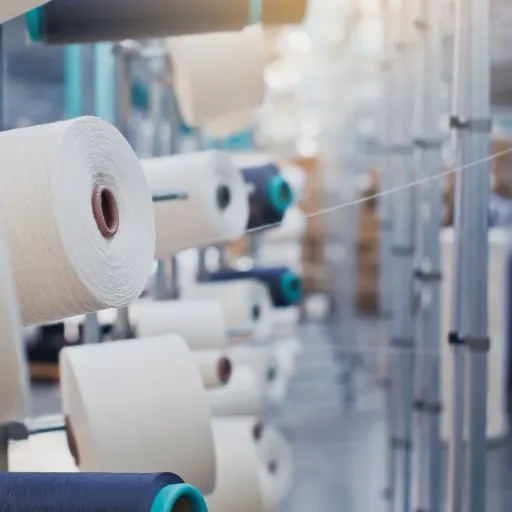
Resource Usage: Water and Energy in Production
The production process of viscose consumes much water and energy, which has been a concern in nature from an environmental standpoint. Water finds use in the processing of wood pulp as well as in the chemical treatment processes that transform it into regenerated cellulose fibers. And, much energy is required, having mostly necessitated non-renewable energy-sources, which further accentuates environmental issues.
⚠️ Environmental Challenges:
- High water consumption in processing and chemical treatments
- Significant energy requirements from non-renewable sources
- Chemical waste and water discharge concerns
The Industry strives to devise new means by which to reduce water and energy consumption. Closed-loop-type operations allow for the recycling and reduction of water use while energy-efficient machinery is in the process of being developed. The reduction in the use of these resources and overall production costs also minimizes environmental harm, which promotes a more sustainable approach in the industry.
However, given the large investments required for new technologies and infrastructure, environmentally sustainable methods continue to pose challenges. Sustainable methods should be promoted through greater industry collaboration and stricter regulation to counter the resource-intensive nature of viscose production. Confronting such economic and environmental concerns standpoint is crucial to ushering toward any form of sustainable textile industry.
Waste Management Practices in Rayon Production
The proper waste disposal procedures need to be set for the rayon production so as to prevent possible environmental degradations and promote sustainability. Rayon production causes considerable amounts of waste byproducts-waste by-products include dissolve wood pulp, some heavy metals, chemicals, and wastewater. Companies can use advanced technology and strong legal measures in waste handling. For example, the treatment of wastewaters using filtration and purification systems all but eliminate contaminants before environmental discharge.
♻️ Sustainable Waste Management Practices:
- Chemical Recovery: Recovery and recycling of caustic soda and carbon disulfide
- Closed-loop Systems: Capture and reuse of chemicals to reduce environmental release
- Wastewater Treatment: Advanced filtration and purification before discharge
- Regulatory Compliance: Following environmental laws and certifications
Another essential practice includes the recovery and recycling of chemicals used in production processes, including caustic soda and carbon disulfide. If discharged untreated into the environment, they pose a menace to life forms and human health. Through the application of closed-loop systems, these substances can be captured and reused, thereby significantly curbing their release into the environment. The adoption of such technologies drastically cuts down on the generation of hazardous wastes and could save money in the long run.
Waste disposal also concerns itself with following environmental laws and certifications to support sustainable practices. Division employees are regularly audited, cantankerous and transparent with waste reports, and generally encourage a responsible approach to the problem. Partnerships with environmental agencies and a few selected research institutions can also spur innovation in methods of waste reduction, thus aiding in a cleaner and sustainable textile industry. Through innovation, regulation and collaboration, rayon production can indeed be made far less environmentally damaging.
Impact on Ecosystems and Sustainable Practices
The dark shadow of rayon production falls on nature mostly through deforestation, which takes place when cellulose is extracted from timber. Harvesting raw materials on an industrial scale sometimes results in the displacement of habitats and eventually threatens biodiversity. This stands to disrupt ecological balance. Forest loss translates into the loss of carbon sinks, whereas carbon sinks absorb carbon dioxide, thereby lessening greenhouse gas buildup in the atmosphere. From these environmental challenges, the rayon industry must look into sustainability.
🌍 Sustainable Solutions for Ecosystem Protection:
- Responsible Forest Management: Certified sustainable forestry practices
- Alternative Sources: Recycled textiles and agricultural waste
- Closed-loop Production: Minimal pollution and chemical discharge
- Industry Collaboration: Working with conservation groups and research institutions
Sustainable practices lessen the impact that rayons have on the environment during their manufacture. One of the most important things is sourcing cellulose from forests that are responsibly managed or from alternate sources, such as recycled textiles or agricultural waste. The sourcing for such raw materials may be certified to ensure that they are harvested in a sustainable manner. Production gives pollution into the environment; the chiefs discussed methods that consist of close-loop production of using chemicals in order to very much limit pollution.
Industry collaboration and regulation are also important in nurturing ecosystems and sustaining life. Working with conservation groups and research institutions, producers can come up with new approaches to lessen the environmental impact. With strong regulatory mechanisms in place, the companies would be held accountable and thus further encouraged to invest in clean technology and greener methods. These are ways through which rayon production can be implemented unto the protection of nature and into sustainable development.
Current Industry Trends and Future Outlook
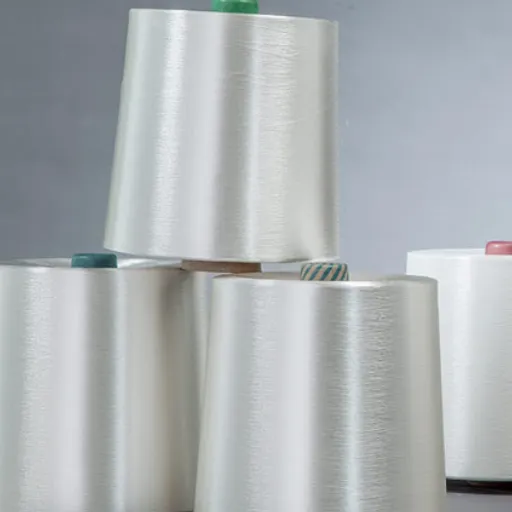
Market Presence of Viscose Rayon
Being very versatile and cheap, and based on its applications, it holds prominence in the global textile industry. It is used for garment, home textiles, and technical textiles, filling the gap between the touch of nature in addition to workability of manmade fibers. Demand for viscose rayon has been increased over time with respect to fast fashion and casual wear, where style-conscious yet cheap consumers find themselves in demand. High demand places viscose in an advantageous position in the market.
📈 Market Advantages of Viscose Rayon:
- Softer, breathable, and absorbent properties
- Cost-effective alternative to natural fibers
- Suitable substitute for cotton amid water resource concerns
- Growing acceptance across various markets
The positives supporting viscose rayon are the attraction of the producers and of the consumers alike. They see it softer, breathable, and absorbent. Another major plus contributing to acceptance is the trend of industries substituting this fiber for natural fibers such as cotton, wherein cotton faces some technical limitations concerning water resources and uncertainty in the supply chain. Hence, twofold acceptance might have accrued in various markets with respect to this.
The future possibilities of the viscose rayon market can be focused on those factors that positively influence market growth, in particular, the rising consumer demand for comfortable and eco-friendly fabrics. Then, on the other hand, future development may rely on the producers finding less environmentally harmful ways to produce to line up with the sustainable development goals on a global scale. The government and regulatory institutions can very much step into its role of enforcement of stricter environmental standards, thereby building into the equation changes in production processes and market dynamics. These factors, taken in combination, tell of a dynamism for and an evolving nature of the global market for viscose rayon.
Use under a Variety of Fields
Viscose rayon is famous for its versatility and, as such, finds applications in many fields, including fashion, home textile, and industrial applications. The fashion world respects its softness and breathability just as much as it respects the sun-soaked feeling of natural fibers such as cotton or silk worn by the masses in casual, formal, and even activewear; the price development portrays style and comfort.
| Application Field | Products | Key Benefits |
|---|---|---|
| Fashion Industry | Casual wear, formal wear, activewear | Softness, breathability, natural feel, affordability |
| Home Textiles | Curtains, upholstery, bedsheets, carpets | Good strength, excellent dye absorption, bright finishes |
| Industrial Applications | Medical textiles, cleaning wipes, filtering materials | Functional properties, versatility, performance reliability |
Another use of viscose rayon is in home textiles. Due to its good strength and ability to absorb dyes easily, it is used for making curtains, upholstery, bedsheets, and carpets. Manufacturers are hence able to create bright-finish aesthetic products that make viscose indelible in home décor and furnishings.
These functional properties of viscose rayon are also harnessed in the industrial dye. It is applied to the manufacture of medical textiles and cleaning wipes and also the qualifying filtering materials. Such diverse applications highlight the flexibility of the raw material, which stands as one of the important supports for the needs of various sectors worldwide.
Future Innovations and Research Directions
The future of viscose rayon will shift farther towards sustainable production methods and more uses through intensive innovation. Consider an environmentally friendly process that uses minimum chemicals and produces minimum waste. Researchers are consequently looking into closed-loop systems whereby water and chemicals are recycled extensively to minimize the environmental impact of producing viscose.
🚀 Future Innovation Areas:
- Enhanced Biodegradation: Fibers that decompose naturally with minimal ecosystem damage
- Advanced Fiber Properties: Enhanced durability, moisture management, fire resistance
- High-end Applications: Medical, automotive, and protective clothing industries
- Sustainable Production: Minimum chemicals, maximum waste reduction
Another aspect that holds much promise is to improve the biodegradation of viscose products. Once enhanced, the fiber will decompose naturally, thereby causing little damage to the ecosystem when disposed of on land. This is in line with the increased demand from all over the world for a more eco-friendly textile system, which is also high on consumer talking points.
Lastly, other research work looks for the development of an advanced viscose fiber with special properties, such as enhanced durability, moisture management, and fire resistance. This allows for wider use of the material in more high-end applications such as the medical, automotive, and protective clothing industries. Through such innovations, viscose rayon still plays an important role in pushing both sustainability and technical development in the textile world.
Frequently Asked Questions (FAQ)
Q: What is the viscose rayon manufacturing process?
A: The manufacturing process of viscose rayon involves the conversion of cellulose, mostly from wood pulp, into a solution that is viscous. The viscous solution is then extruded through a spinneret to form rayon filaments, which are then converted into yarn and fabric.
Q: How does the ripening stage affect the viscose solution?
A: The ripening of the viscose is very important in the manufacturing of viscose rayon. During ripening, the cellulose is treated with carbon disulphide, which develops xanthate groups, causing the cellulose to dissolve and the formation of a ripened viscose solution suitable for the best spinning.
Q: What are the key components used in making rayon?
A: Among the chemicals involved in making rayon are cellulose and carbon disulphide and sodium cellulose xanthate. These chemicals transform cellulose into a solution from which rayon filaments can be prepared.
Q: What is different about cuprammonium rayon when compared to regular viscose?
A: Cuprammonium rayon is prepared in another way called the cuprammonium process, wherein cuprammonium hydroxide is used as a solvent, whereas regular viscose is prepared through the viscose process with the aid of carbon disulphide. Each type has its features and applications.
Q: How are rayon filaments formed in the viscose rayon production?
A: In the viscose rayon production, the ripened viscose solution is extruded through a spinneret to form continuous yarns of rayon filaments. The filaments are then stretched and solidified in a spin-bath to improve their physical properties such as elasticity.
Q: How does the spinning process affect the quality of the rayon?
A: The spinning process is very much important in determining the quality of the rayon yarns. If the viscose solution is not filtered properly or the spinning conditions are not maintained accordingly, either may disturb the spinning process or cause defects in the rayon filament and thus affect the quality of the final product.
Q: What makes the ageing process significant in viscose rayon manufacturing?
A: The ageing process strengthens and stabilizes the rayon filaments, providing well-aged viscose rayon with good durability and resistance to wear, thereby increasing the quality of the final yarn and fabric products.
Q: What kinds of rayon can come from the viscose process?
A: The kind of rayon that the viscose process can manufacture includes regular viscose and high tenacity rayon. They are maintained as slight variations for particular applications where high tenacity rayon has far greater strength and durability than regular viscose.
Q: How do rayon manufacturers ensure the quality of their finished products?
A: Rayon manufacturers pay close attention during the viscose rayon manufacture, such as how well the viscose solution can be filtered, the conditions of spinning, and the finished rayon fabric and yarns are subjected to a quality check so that defects are minimized.
References
- Viscose Rayon Fiber Manufacturing Process – Textile Sphere – A detailed explanation of the manufacturing steps, including steeping, shredding, aging, xanthation, and wet spinning.
- What is Viscose Rayon Fabric and How is it Made? – Textile Yarn – Insights into the production of viscose rayon from natural sources like wood pulp through chemical processes.
- Rayon, Viscose, Modal – Sustain Your Style – Information on the origins of rayon, including its derivation from wood pulp and the processes involved.









